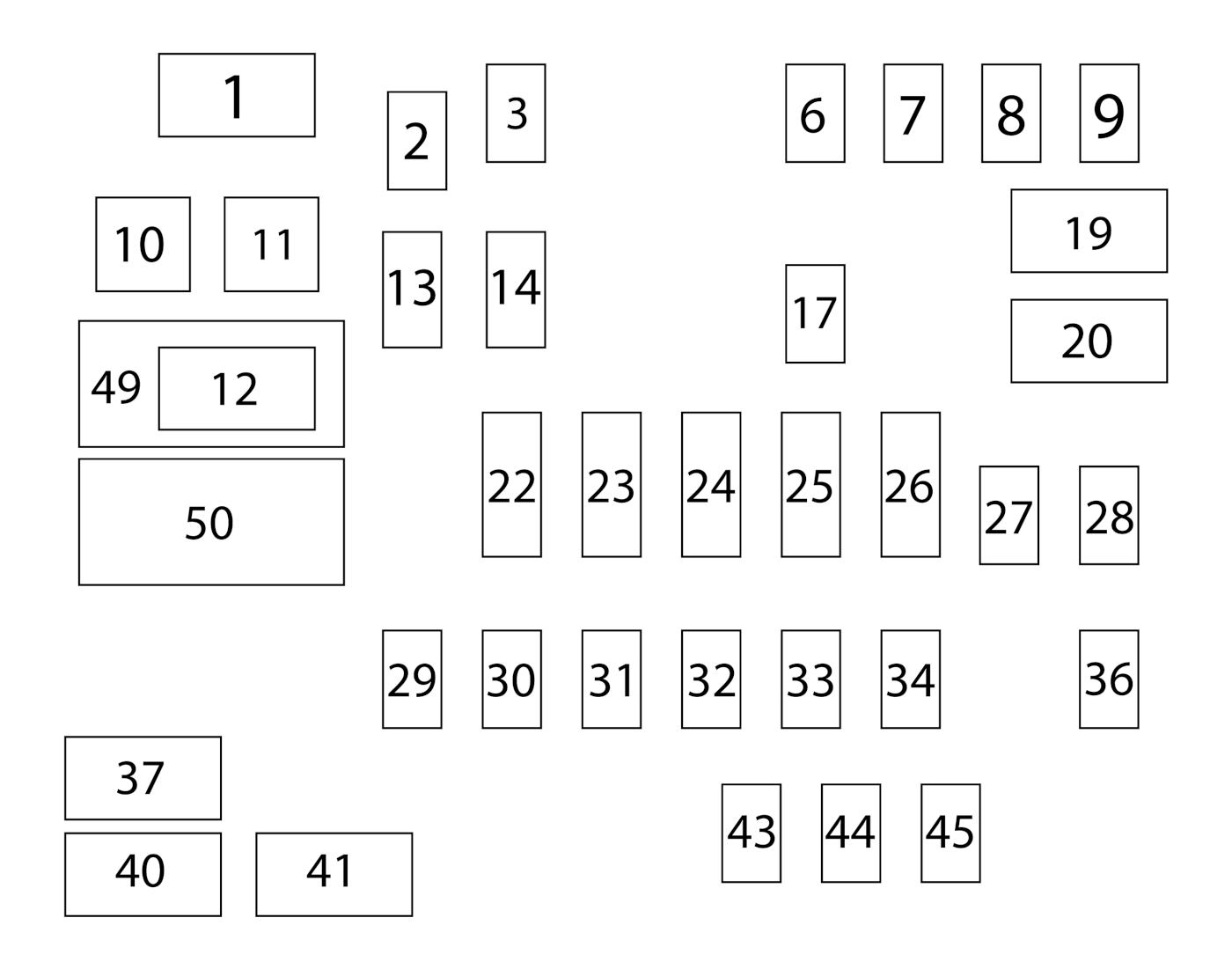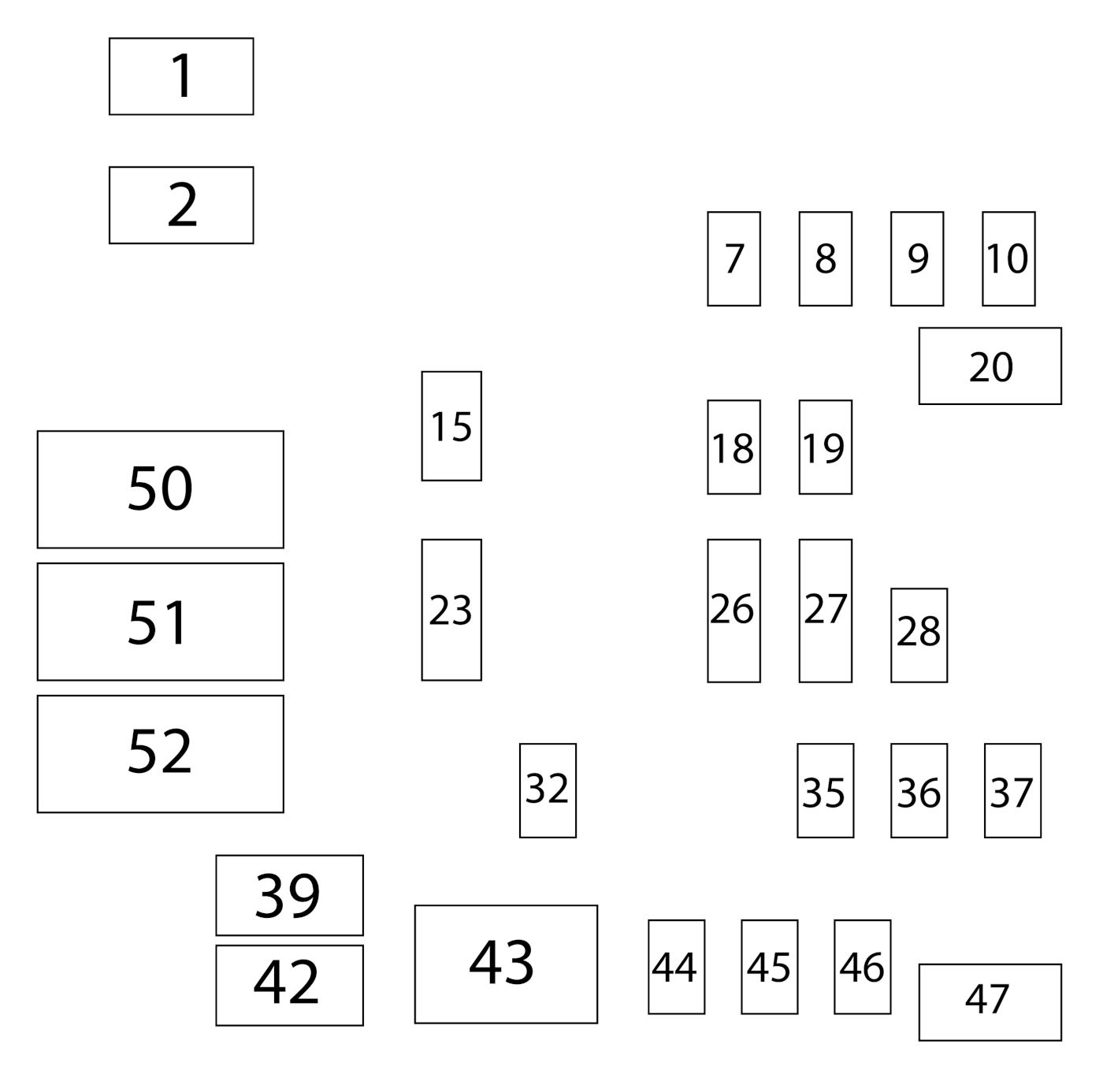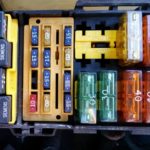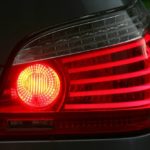Quick Navigation
Shielding its electrical components, such as headlights, radio, and power outlets, from potential damage caused by electric surges is the 2016 Chevrolet Silverado’s fuse box.
If a component stops working or malfunctions, make sure you check your fuses first!
Here we discuss various locations where to find this fuse box within the 2016 Chevrolet Silverado.
How Many Fuse Boxes Does a Chevy Silverado Have?
Chevrolet Silverado drivers often wonder how many fuse boxes their vehicle contains.
Depending on your Silverado’s model, year, engine type, and drivetrain, this answer can vary – though most generally include two or three.
The 2016 Chevy Silverado has 3, one in the engine compartment and two in the interior.
Finding the Chevrolet Silverado’s primary fuse box is typically an effortless task – it is usually located under the hood and contains all of your vehicle’s main fuses.
This large rectangular-shaped metal box safeguards electricity to vital features like headlights, audio systems, climate control units, and more!
Its lid remains securely closed with two clips that can be easily released when needed.
In addition to the primary fuse box under the hood, all Chevrolet Silverado models also have secondary fuse boxes located inside the cabin.
From the driver’s sidekick panel, you’ll find this fuse box located near your car’s lower dashboard.
The other cabin fuse box is on the right side of the panel.
It houses most of your vehicle’s interior electrical components’ fuses, such as for power windows, door locks, and dome lights.
Engine Bay Fuse Box
The engine bay fuse box is a must-have item in your truck’s system to protect essential electrical components from hazardous power surges.
You’ll find this indispensable piece tucked away near the battery on the driver’s side of your vehicle’s engine bay.
Unlock the truck hood and find the black plastic fuse box cover on the driver’s side near your battery.
You’ll discover a diagram of fuses when you remove this lid, providing simple access to all of them!
The engine bay fuse box features multiple fuses, each with a distinct purpose.
For instance, the trailer brake, anti-lock brake system pump, rear window defogger, and cooling fans are among some of the components regulated by these specialized fuses.
Plus, two more important systems can also be managed here, including the fuel pump and ignition for your vehicle’s Engine Control Module!
It even has an air conditioning compressor clutch, so you’ll never have to worry about overheating on those long summer drives.
For added convenience, each fuse has a distinctive number for easy recognition.

Roles of the fuses and relays in the Engine Compartment (2014, 2015, 2016)
| № | Role |
| 1 | Trailer Brake |
| 2 | Trailer Battery |
| 3 | Pump for the Antilock Brake System |
| 4 | BEC 1 Instrument Panel |
| 5 | Spare |
| 6 | 4WD Tree |
| 7 | Spare |
| 8 | BEC 2Instrument Panel |
| 9 | Spare |
| 10 | Defogger for The Rear Window |
| 11 | Starter |
| 12 | Cooling Fan 1 |
| 13 | Cooling Fan 2 |
| 14 | Turn Lamps/Trailer Stop, Left |
| 15 | Trailer Parking Lamps |
| 16 | Trailer Back-up Lamp |
| 17 | Trailer Stop/Turn Lamps, Right |
| 18 | Fuel Pump |
| 19 | Control Module For The Integrated Chassis |
| 20 | Control Module For The Electronic Suspension |
| 21 | Fuel Pump Power Module |
| 22 | Upfitter Switch 1 |
| 23 | Upfitter 2 |
| 24 | Front Wiper |
| 25 | Antilock Brake System Valves |
| 26 | Upfitter SW 2 |
| 27 | Upfitter SW 3 |
| 28 | Parking Lamps, Right |
| 29 | Parking Lamps, Left |
| 30 | Upfitter 3 |
| 31 | Upfitter SW 4 |
| 32 | Upfitter 4 |
| 33 | Back-up Lamps |
| 34 | Engine Control Module Ignition |
| 35 | Air Conditioning Compressor Clutch |
| 36 | Heated Mirrors |
| 37 | Upfitter 1 |
| 38 | Center High-Mounted Stop lamp |
| 39 | Miscellaneous Ignition |
| 40 | Transmission Ignition |
| 41 | Fuel Pump 2 |
| 42 | Cooling Fan Clutch |
| 43 | Engine |
| 44 | Fuel Injectors A, Odd |
| 45 | Fuel Injectors B, Even |
| 46 | Oxygen Sensor B |
| 47 | Throttle Control |
| 48 | Horn |
| 49 | Fog Lamp |
| 50 | Oxygen Sensor A |
| 51 | Engine Control Module |
| 52 | Interior Heater |
| 53 | Spare |
| 54 | Aero shutter |
| 55 | Front Washer |
| 56 | Compressor for The Air Conditioning/ (Voltage Control Regulated By The Battery) |
| 57 | Air Conditioning Compressor Module/ Battery Pack |
| 58 | Transmission Control Module/ Engine Control Module |
| 59 | Headlamps |
| Relays | |
| 60 | Fuel Pump |
| 61 | Upfitter 2 |
| 62 | Upfitter 3 |
| 63 | Upfitter 4 |
| 64 | Trailer Parking Lamps |
| 65 | Run/Crank |
| 66 | Upfitter 1 |
| 67 | Fuel Pump 2 |
| 68 | AC Control |
| 69 | Starter |
| 70 | Rear Window Defogger |
| 71 | Engine Control Module |
| 72 | Cooling Fan Clutch |
The trailer brake system is labeled as #1, the trailer battery stands at #2, and the anti-lock brake system pump is designated as #3.
The instrument panel BEC 1 takes up position four while the rear window defogger holds rank 10, with the starter obtaining designation 11.
The engine compartment fuse box contains different relays that control a variety of systems and components, including the fuel pump relay (number 60), up fitter two relays (number 61), and starter relay (number 69).
Additionally, it’s home to many fuses as well.
These provide power for your vehicle’s various features, like air conditioning controls, rear window defoggers, and engine control modules.
The Trailer Brake (Fuse 1) and Trailer Battery (Fuse 2), act as the first line of defense by allowing power to flow from your vehicle into the brake and battery systems for any attached trailer.
As an added layer of security, Fuse 3 is dedicated to safeguarding the electrical circuit intended for supplying energy to the ABS system’s pump components.
The BEC 1 Instrument Panel (Fuse 4) and the BEC 2 Instrument Panel (Fuse 8) are essential for the vehicle’s electrical system by providing power to the instrument panel.
Meanwhile, Fuse 10 will power your rear window defogger, allowing you a clear view in all kinds of weather!
Additionally, Fuses 11-13 provide energy for both your starter and cooling fans – so rest assured that it’ll always be running perfectly smooth.
The Trailer Stop/Turn Lamps on the left (Fuse 14) and right (Fuse 17) supply power to your trailer’s stop and turn lamps.
Moreover, Fuse 18 powers up the fuel pump in your vehicle – a critical element for smooth running.
Additionally, integral components such as Integrated Chassis Control Module (Fuse 19) and Electronic Suspension Control Module (Fuse 20), are essential aspects of any good suspension system that ensures ideal chassis control.
The Fuel Pump Power Module (Fuse 21) energizes the fuel pump power module, while Upfitter Switch 1 (Fuse 22), Upfitter 2 (Fuse 23), and Upfitter 3 (Fuse 30) provide various customization tasks.
To activate the Antilock Brake System Valves, Fuse 25 should be used, whereas Engine Control Module Ignition requires Fuse 34 in order to bring it up to life.
Fuse 35 powers the Air Conditioning Compressor Clutch, while Fuse 36 energizes your heated mirrors.
The Transmission Ignition is powered by Fuse 40, and the secondary Fuel Pump gets its energy from Fuse 41.
Additionally, you have Cooling Fan Clutch (Fuse 42) for extra cooling power, and engine operations are enabled through fuse number 43.
Next, the Fuel Pump (Relay 60) is required to power the fuel pump while Upfitter 2 (Relay 61), Upfitter 3 (Relay 62), and Upfitter 4 (Relay 63) are necessary for customizing.
Additionally, Trailer Parking Lamps Relays 64 offer energy supply to trailer parking lamps; on top of that, Run/Crank’s Relay 65 allows power distribution towards run and crank systems.
The AC Control (Relay 68) powers the air conditioning control, while the Starter (Relay 69) provides power to ignite your engine.
As for Relay 70, that’s used for powering up your Rear Window Defogger.
Meanwhile, Relay 71 is responsible for energizing your Engine Control Module, and lastly, Cooling Fan Clutch (Relay 72) looks after providing energy to its corresponding component.
It’s pivotal to understand that the exact placement of fuses and relays in your vehicle’s engine compartment fuse box may differ across model years and trims.
To get accurate information regarding your car’s particular relay or fuse arrangement, it is always recommended to seek advice from either a professional mechanic or the owner’s manual.
Internal Fuse Box No.1
The Internal fuse box no.1, which is located beneath the dashboard of your Chevrolet Silverado, serves a vital purpose: to protect the electrical components in your vehicle from harm.
From power windows and accessory outlets for charging devices to interior lighting, this fuse box helps keep you safe during use by safeguarding against potential issues such as overheating or short circuits.
The 2016 Chevrolet Silverado’s Instrument Panel Fuse Box is a haven of security, safeguarding all of the vehicle’s essential electrical components, such as the door controls, HVAC system, and power windows.
And you won’t miss out on any features either!

Fuse Roles of the Instrument Panel Fuse Box No.1 (2014-2016)
| № | Role |
| 1 | Power Outlet for accessories 2 |
| 2 | SEO /Retained Accessory Power |
| 3 | Garage door opener (remote) / rearview mirror (interior) |
| 6 | Body Control Module 3 |
| 7 | Body Control Module 5 |
| 8 | Driver Window Switch/Mirror Switch |
| 9 | — |
| 10 | Accessory power outlet/Retained accessory power |
| 11 | Accessory Power Outlet Battery |
| 12 | Accessory Power Outlet 1/Cigarette Lighter |
| 13 | Discrete Logic Ignition Switch |
| 14 | Switch Backlighting |
| 17 | Body Control Module 1 |
| 19 | — |
| 20 | — |
| 22 | HVAC/Auxiliary HVAC/Ignition |
| 23 | Instrument cluster/ Ignition sensing diagnostic module/ Ignition |
| 24 | — |
| 25 | Data Link Connector/ Driver Seat Module |
| 26 | Passive Entry/Passive start/HVAC |
| 27 | — |
| 28 | — |
| 29 | Park enable/ pedals Electrically adjustable |
| 30 | SEO |
| 31 | Accessory/Run/Crank |
| 32 | Heated Steering Wheel |
| 33 | — |
| 34 | Instrument Cluster |
| 36 | — |
| 37 | — |
| 40 | Left Doors |
| 41 | Driver Power Seat |
| 43 | heated, cooled or ventilated seats for the left side (if equipped) |
| 44 | heated, cooled or ventilated seats for the right side(if equipped) |
| 45 | — |
| 49 | Retained Accessory Power/Accessory |
| 50 | Run/Crank |
A power outlet is installed to regulate such electricity to protect the circuits powering both accessories 2 (Fuse 1) and SEO/Retained Accessory Power (Fuse 2).
This safeguards your device from potentially hazardous overloads while ensuring that it functions properly at all times.
Fuse 3 powers up your garage door opener’s remote and the interior rearview mirror.
Body Control Modules 3 and 5 (Fuses 6 & 7) govern various components of the automobile electrical system, like power windows, locks, and lighting.
The Driver Window Switch/Mirror Switch (Fuse 8) is responsible for powering the driver’s window switch and mirror switch.
For your convenience, Fuse 10 provides power to both accessory outlets and retains the accessory power system, while Fuse 11 offers energy supply specifically to the Accessory Power Outlet Battery.
Accessory Power Outlet 1/Cigarette Lighter (Fuse 12) offers energy to the first accessory power outlet and cigarette lighter, allowing your car’s system to run without fail.
Discrete Logic Ignition Switch (Fuse 13) supplies electricity for the discrete logic ignition switch – a key component in controlling various aspects of your vehicle such as windows, locks, and lighting systems.
Lastly, Body Control Module 1 (Fuse 17), fed by Switch Backlighting (Fuse 14), is essential to keep all functions running smoothly.
Fuse 22 powers the heating, ventilation, air conditioning, and auxiliary HVAC systems.
Meanwhile, Fuse 23 is responsible for supplying power to the instrument cluster and ignition sensing diagnostic module in addition to its usual duties of powering up your car’s ignition.
The Data Link Connector/Driver Seat Module (Fuse 25) is your power source for connecting to the data link and using the driver’s seat module.
Fuse 26 is all you need regarding Passive Entry/Passive start/HVAC systems and heating, ventilation, and air conditioning operations.
For Park enable and Pedals Electrically adjustable functions, Fuse 29 will let you in on the secret!
Lastly, do not fear needing access to a vehicle Starting & Charging System – that`s where SEO (Fuse 30) will come into play!
The Accessory/Run/Crank Fuse (number 31) energizes the vehicle’s accessories, run and crank systems.
Meanwhile, for a heated steering wheel experience in cold weather, use Fuse 32 to power it up!
Furthermore, if you need your instrument cluster running, look no further than Fuse 34.
Left Doors’ energy source? That would be provided by Fuse 40 while Driver Power Seat is powered by-you guessed it-Fuse 41!
For the comfort of your passengers, Fuse 43 provides power to the heated, cooled or ventilated seats on the left side (if equipped), while Fuse 44 powers these features for the right side.
Additionally, with Retained Accessory Power/Accessory enabled via Fuse 49 and Run/Crank operational through Fuse 50 provide power to the vehicle’s run and crank systems.
Ensure that you consult the car owner’s manual to grasp a full list of distinct fuses and their roles, as they can vary depending on your vehicle type and setup.
Internal Fuse Box No.2
Being located on the passenger side of your 2016 Chevrolet Silverado, the Instrument Panel Fuse Box No.2 houses a plethora of essential electrical components such as fuses for accessory power outlets 3 and 4, body control modules 4, 6, 7 and 8, rear seat entertainment systems, cargo lamps, steering wheel controls, and radios.
This fuse box house fuses for a variety of systems, such as the airbag/info system, power take-off/SEO battery 1, obstacle detection, and USB ports.

Roles of the fuses in the Instrument Panel Fuse Box No.2 (2014-2016)
| № | Role |
| 1 | Power Outlet for accessories 3 |
| 2 | Power Outlet for accessories 4 |
| 7 | Body Control Module 4 |
| 8 | Body Control Module 8 |
| 9 | Rear Seat Entertainment |
| 10 | Cargo Lamp |
| 15 | Steering Wheel Controls |
| 18 | Radio |
| 19 | — |
| 20 | Sunroof |
| 23 | Airbag/Info |
| 26 | Export/Power Take Off/SEO Battery 1 |
| 27 | Obstacle Detection/ USB Ports |
| 28 | Body Control Module 2 |
| 32 | SEO Battery 2 |
| 35 | AC Inverter |
| 36 | Amplifier |
| 37 | — |
| 39 | Rear Sliding Window |
| 42 | Right Door Window Motor |
| 43 | Front Blower |
| 44 | SEO |
| 45 | Body Control Module 6 |
| 46 | Body Control Module 7 |
| 47 | Passenger Seat |
| 50 | Retained Accessory Power/Accessory |
| 51 | Rear Sliding Window Open |
| 52 | Rear Sliding Window Close |
It contains fuses for other components like the AC Inverter, Amplifier, and Rear Sliding Window.
Not to mention two more – those for the front blower, right door window motor, and passenger seat.
To prevent accessories from malfunctioning due to electrical overloads, Power Outlet for Accessories 3 (Fuse 1) and Power Outlet for Accessories 4 (Fuse 2) safeguard the power supply circuits linked to your accessory outlets.
These fuses act as a barrier of protection, ensuring that all your accessories continue functioning without any issues!
Your vehicle’s electrical system wouldn’t be complete without the critical roles of Body Control Module 4 (Fuse 7) and Body Control Module 8 (Fuse 8).
These two fuses are responsible for powering essential functions like windows, door locks, lighting – you name it.
Without them, these everyday conveniences would become a thing of the past.
Unlock the thrilling world of rear-seat entertainment with Fuse 9.
You can also enjoy a well-lit ride thanks to the Cargo Lamp (Fuse 10) and its corresponding fuse, safeguarding power for your car’s cargo light!
Activate the cruise control, audio system, and sunroof in your vehicle with Steering Wheel Controls (Fuse 15).
The Radio (Fuse 18) fuse shields the radio circuit from damage whilst Sunroof (Fuse 20) supplies power to unlock your vehicle’s full potential.
Fuse 23, Airbag/Info, is vital for supplying electricity to your vehicle’s airbag and information system.
Fuse 26 (Export/Power Take Off/SEO Battery 1) and Fuse 32 (SEO Battery 2) provide protection for the electrical pathways that power your car’s starting and charging systems.
Fuse 27 (Obstacle Detection/USB Ports) ensures a steady flow of energy to both the obstacle detection system and any USB ports in your ride.
Your vehicle’s Body Control Module 2 (Fuse 28) is an essential component in the electrical system, as it controls functions such as power windows, locks, and lighting.
By providing electricity to the air conditioning inverter of your car, the AC Inverter (Fuse 35) guarantees a comfortable ride while the Amplifier (Fuse 36) furnishes energy to its audio amplifiers for a high-quality sound experience.
Need power to the rear sliding window in your vehicle? Fuse 39 has you covered.
Looking for a power source for the right door window motor? Rely on Fuse 42.
Seeking an energy source for the front blower of the heating and air conditioning system? No need to look any further than Fuse 43!
Need some juice for starting or charging up your car battery? You can count on SEO, which is supplied by Fuse 44.
The electrical system of your vehicle is regulated by two Body Control Modules – 6 (Fuse 45) and 7 (Fuse 46).
Through their dynamic functions, the power windows, door locks, and lighting are all kept in check.
Also, be sure that Passenger Seat’s Fuse 47 provides adequate electricity to those seated on it!
Accessory Power/Accessory (Fuse 50) supplies electricity to your car’s accessories, regardless if the engine is running or not.
If you have a rear sliding window open and close function in your vehicle, Rear Sliding Window Open (Fuse 51) and Rear Sliding Window Close (Fuse 52) provide the power needed for it to work properly.
It is absolutely essential to review the owner’s manual for a comprehensive list of fuses and their appropriate applications before attempting to work with any fuse boxes.
This information may differ depending on your vehicle’s make and model, so you must double-check first!
Conclusion
The 2016 Chevrolet Silverado is outfitted with two or three fuse boxes to safeguard against electric surges, which could cause irreparable damage to its electrical components.
The main fuse box, comprising all of the most essential fuses for the vehicle, can be found beneath the hood.
If you’re looking for the secondary fuse box, it’s tucked away near the driver’s side lower dashboard inside your vehicle and contains most of its electrical components.
As for the engine bay fuse box, that one can be found close to the battery on the opposite side of where you located the other.
This holds all sorts of critical fuses and relays that are necessary in order to operate numerous systems like fuel pumps, ignitions, and cooling fans – to name a few!
To identify the exact arrangement of relays and fuses, you can refer to your owner’s manual or contact an expert mechanic.
Internal fuse box no. 1 lies beneath the dashboard, while no. 2 is located on the passenger side; both contain necessary components for power windows, body control modules, heated steering wheel, and more.

James has been a car enthusiast since his childhood when he learned the differences between a ford and a chevy from his father. He loves to drive and restore old cars with a special drive for Italian marvels. Currently, he has a 1968 Alfa Romeo. He has studied aeronautics and civil aviation in his college and still gets smitten by Galant SS and Lancer GSR.
He is a New York-based product training director working with a giant automotive retailer. He loves to review and uncover the vehicles and their fascinating stories. He believes in keeping it legitimate with a keen passion for research on the latest technological upgrades in cars. While reading his articles or blogs, you can sense the extensive research and dedication backing the piece of text. He loves fried chicken, music, and spending quality time with his pet dog.







